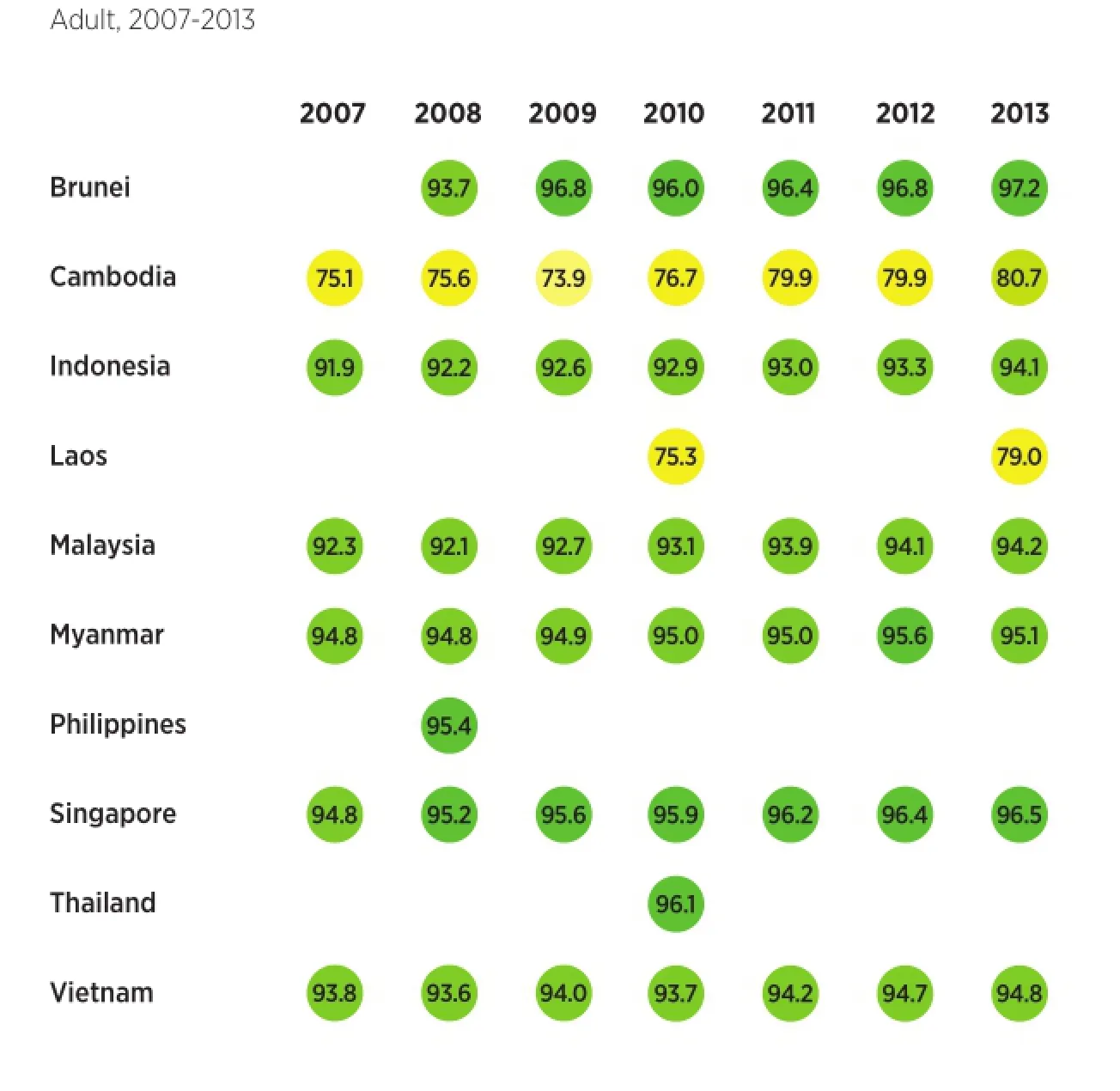Investment in ASEAN Requires Close Attention to Development Situation
By Li Hao, Liu Zhichao
Investment in ASEAN Requires Close Attention to Development Situation
By Li Hao, Liu Zhichao

Workers busy on the assembly line of a factory set up by TCL, a Chinese household appliances manufacturer, in Dong Nai, Vietnam.
With the implementation of the Belt and Road Initiative, ASEAN is expected to be the hottest investment destination for Chinese enterprises. However, as an emerging market, ASEAN still poses lots of risks and challenges for foreign investors. Therefore, Chinese investors who are preparing to enter the ASEAN market need to conduct a comprehensive market survey. Apart from the political and economic environment, social and technical environments also need to be taken into consideration.
The diversity of ASEAN countries lies not only in the political system and economic development, but is also reflected in the following aspects:
Firstly, education serves as an essential foundation and pillar for economic and social development. ASEAN governments have increasingly thought highly of education. Governments of ASEAN countries spend increasing amounts on public education. For example, in 2011, Malaysia and the Philippines increased public education spending by 21 percent. In 2014, Singapore and Brunei increased their public education spending to 20 percent and 10 percent of government expenditures, respectively.
According to statistics, adult literacy rates in ASEAN countries have increased in recent years. By the year 2013, Singapore, Brunei and Myanmar had seen their adult literacy rates climb above 95 percent, and in Indonesia, Malaysia and Vietnam the rates are nearing 95
percent. Cambodia and Laos enjoy comparatively low literacy rates at approximately 80 percent. Adult literacy improvement is a significant embodiment of quality of life. With literacy rates improving, the skill of laborers is also rising.
onsumer p
are not only affected by their own choices, but also by social factors. The level of consumers’ incomes in one country acts like a gauge of consumption level. Countries like Singapore generate high per-capita incomes. Singaporeans have a tendency to purchase high-tech and reliable products. Under the context of the Belt and Road Initiative, service and tech-oriented enterprises may consider making an investment in these countries.
However, in countries such as Laos and Cambodia with low per-capita income, residents are likely to prioritize their basic necessities of life including clothing, food, housing and transportation. Those who deal with petty commodities, industrial products as well as household appliances are given top priority to make investments. Besides, consumers have developed a comparatively regular spending preference for necessities, which cannot be altered in a short time.
Thirdly, the impact of religious culture and ethnicity on people’s social lives is evident across societies. For example, a majority of people from Thailand, Myanmar, Cambodia, Vietnam and Laos are Buddhists, accounting for about 90 percent of the total population. The Philippines, however, is dominated by Catholicism. Therefore, when engaging in direct investment in these countries, enterprises should fully respect diversified cultures, therefore avoiding unnecessary disputes and conflicts due to cultural differences. Enterprises should pay attention to the cultural factors that influence the preferences of an ethnic group, which will help them avoid delays in investment projects.
Fourthly, foreign enterprises should pay attention to the real technological capability of the ASEAN countries that they intend to invest into. The majority of ASEAN countries lag behind in national scientific and technological development and have weak capacity for independent innovation. However, compared to the past, huge progress has been made. According to the ratio of expenditures on research and development compared to Gross Domestic Product (GDP), Singapore has maintained a ratio above 2 percent of GDP in recent years, while Malaysia’s research and development is growing at a steady pace, from 0.79 percent of GDP in 2008 to 1.13 percent in 2012.
Singapore and Malaysia have seen the percentage of high-tech exports increased, soaring to an average of about 45 percent in 2013. In Thailand and Vietnam, about 20 percent of exports are high-tech products. However, in Brunei, Indonesia and Cambodia, the high-tech export percentage is still below 20 percent. Therefore, ASEAN countries still share a large gap in technological advancement. When Chinese enterprises engage in cross-border trade and export, they should regard the overall development of the region as a prerequisite to keeping a rational eye on trade opportunity.
Chinese investors who are preparing to enter the ASEAN market need to conduct a comprehensive market survey.

LAdituelt,r 2a0c0y7 -R20a13tes in ASEAN Countries
About the authors:

Li Hao is the Executive Deputy Director of the Maritime Silk Road Center at Guangxi University.

Liu Zhichao, Master of Law, works for the Party School of Guangxi Zhuang Autonomous Region Committee of CPC.

